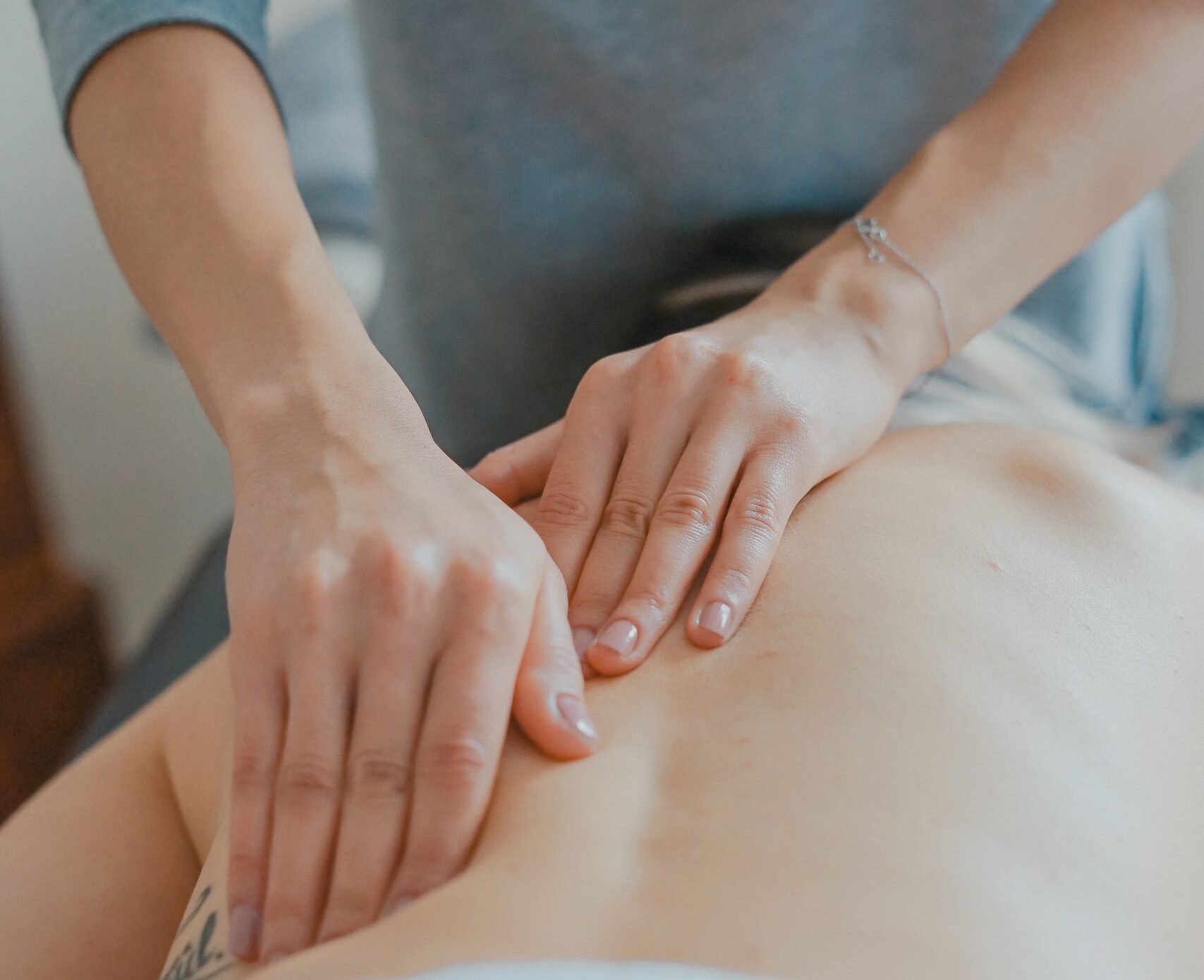Remedial massage is a therapeutic approach that goes beyond relaxation to address specific discomfort or dysfunction in the body caused by muscle tightness, injuries, or postural imbalances.
It involves assessing the muscles and soft tissues of the body and using targeted techniques to help manage tension, promote recovery, and alleviate pain.
Unlike general relaxation massage, which is mainly focused on reducing stress, remedial massage uses more deliberate techniques.
These can include deep tissue therapy, trigger point therapy, myofascial release, and stretches, all tailored to suit the individual’s needs.
The goal is to help the body restore balance and function while supporting overall wellbeing.
What can a remedial massage help with?
Remedial massage is a versatile therapy that can assist with a range of issues, including but not limited to:
- Muscle tightness and tension: Commonly in the neck, shoulders, back, and legs.
- Sports injuries: Helping to manage recovery and rehabilitation.
- Postural imbalances: Addressing muscular tightness or overuse from prolonged desk work or repetitive movements.
- Headaches: Tension headaches caused by tightness in the neck, shoulders, or scalp can often benefit from targeted massage.
- TMJ pain: Jaw discomfort, clicking, or tightness linked to the temporomandibular joint may be improved through work on the surrounding muscles.
Each session is tailored to the individual, so whether the goal is to reduce discomfort, improve movement, or simply feel more at ease in the body, the focus remains on addressing personal needs safely and effectively.
Can remedial massage help with postural imbalances?
Postural imbalances often develop due to repetitive movements, prolonged sitting, poor ergonomics, or lifestyle habits.
These imbalances can lead to tightness in certain muscles, weakness in others, and contribute to discomfort, reduced mobility, or even chronic pain over time.
Remedial massage can assist by identifying areas of muscular tension or asymmetry and applying targeted techniques to release tight muscles and improve flexibility.
In some cases, strengthening exercises or postural adjustments may also be recommended as part of a holistic approach.
By addressing the underlying soft tissue restrictions, remedial massage can help promote better posture, reduce discomfort, and support more balanced movement patterns in daily activities.
Can remedial massage help with headaches?
Tension headaches often stem from tightness in the muscles around the neck, shoulders, and scalp.
These headaches may be felt as a dull ache or pressure, often creeping up after periods of stress, long hours at a desk, or poor posture.
Remedial massage can assist by targeting the areas of tension contributing to headaches.
Techniques may work to release trigger points, improve circulation, and encourage relaxation of the muscles.
With regular treatment, some individuals may notice a reduction in both the severity and frequency of their headaches.
While remedial massage is not a cure for headaches, it may play a role in management for some people.
Can remedial massage help with TMJ discomfort?
The temporomandibular joint (TMJ) connects the jawbone to the skull and can become a source of discomfort for many people.
Tightness in the jaw muscles, clenching, or grinding can cause symptoms like soreness, clicking, or tension in the neck and head.
Remedial massage may assist in addressing TMJ discomfort by focusing on the muscles in and around the jaw, as well as related areas like the neck, shoulders, and head.
Gentle techniques can be employed to help release tightness and improve movement.
As part of a holistic approach, individuals experiencing TMJ discomfort are encouraged to seek advice from their dentist, GP, or physiotherapist to ensure that the condition is being managed effectively.
Remedial massage can complement these treatments.
Does remedial massage hurt?
A common concern is whether remedial massage hurts.
The answer largely depends on the individual and their condition.
Because remedial massage often involves working on deeper layers of muscle tissue or addressing areas of tension, some discomfort may be experienced, particularly when dealing with trigger points (knots in the muscle) or restricted areas.
However, any discomfort should always remain within a tolerable range, and feedback is encouraged throughout the session.
Techniques can be adjusted to suit the individual’s comfort level and tolerance.
Remedial massage should never feel excessively painful, and the aim is to create positive change in the body, not excessive soreness.
After a session, it is normal to feel some tenderness in treated areas for a day or two, especially in the case of deep tissue work.
Gentle movement, hydration, and rest are typically recommended to support recovery.
Remedial massage is a useful tool for addressing issues and supporting wellbeing.
While some discomfort may be part of the process, the goal is always to help individuals feel more at ease in their bodies, whether by targeting specific concerns or simply assisting with general muscular tension.
If tension or pain is interfering with daily life, remedial massage may help address these challenges.
Disclaimer: This blog post is for informational purposes only and is not a substitute for professional healthcare advice. Individuals are advised to consult with their healthcare provider for guidance on specific conditions.
References
- Tansey, E., & Burke, F. (2015). Massage therapy for improving posture and reducing musculoskeletal pain: A systematic review. Journal of Manual & Manipulative Therapy, 23(1), 30-38.
- Bove, G. M., & Nilsson, N. (2014). Advances in understanding the role of muscle tension in migraine and tension-type headache. Journal of Bodywork and Movement Therapies, 18(1), 84-92.
- Aguilera, F. J., Martín, D. P., Masanet, R. A., et al. (2011). Immediate effects of a myofascial release technique on pain in patients with temporomandibular joint dysfunction. Journal of Manipulative and Physiological Therapeutics, 34(2), 37-43.

